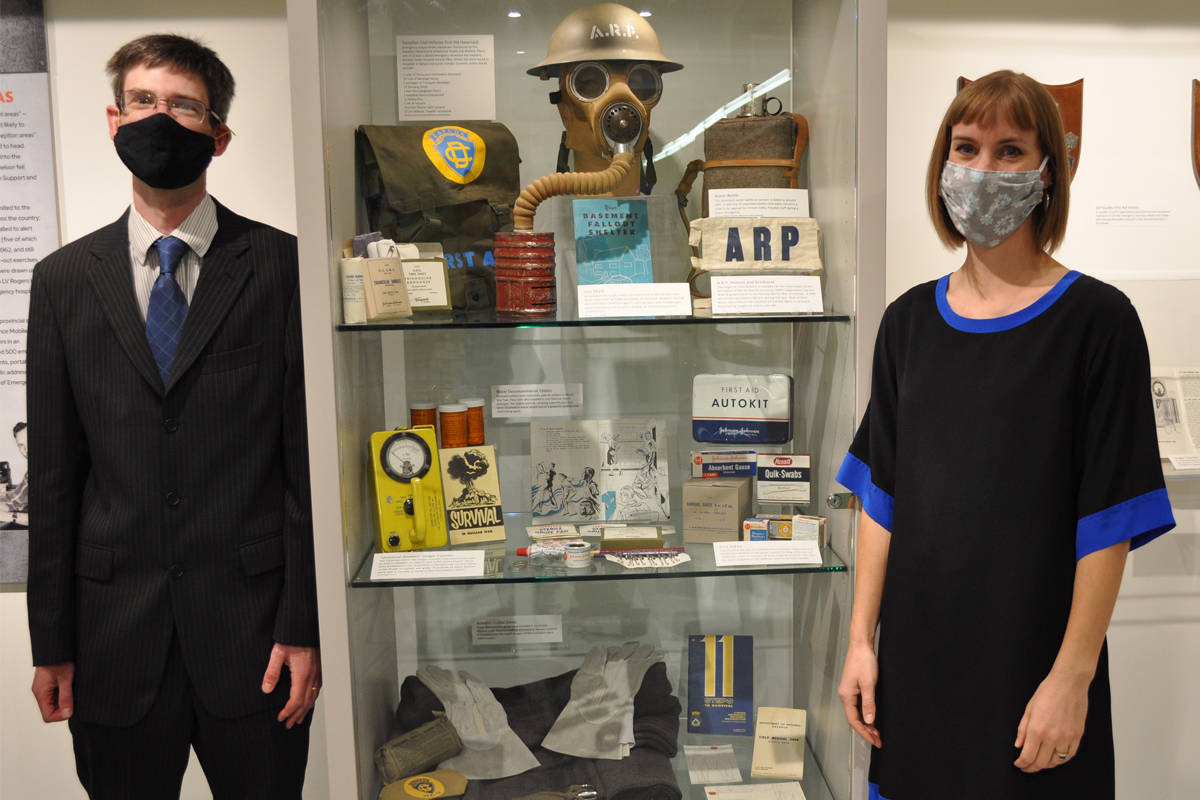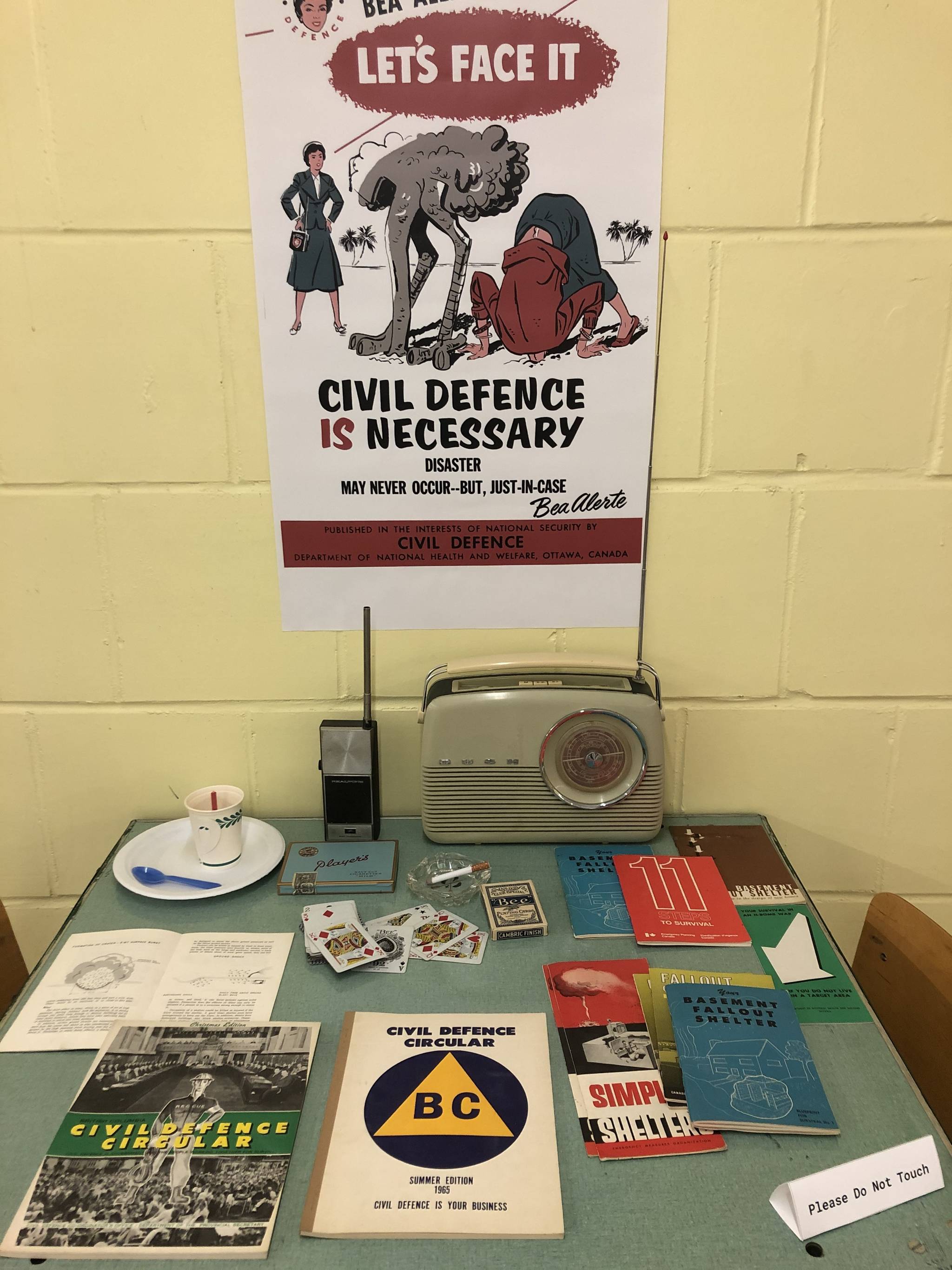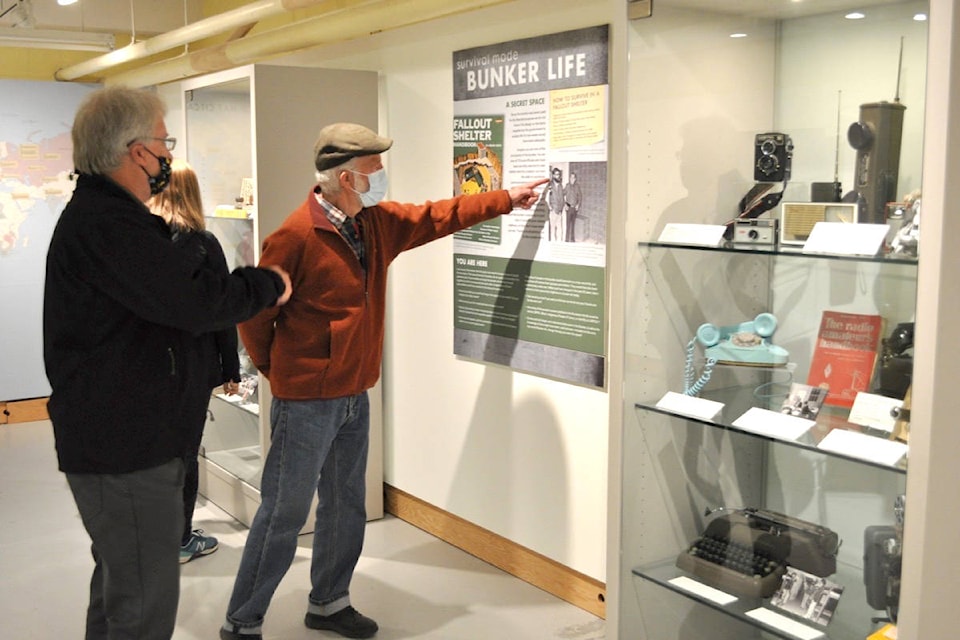If Canada had ever become targeted by nuclear attacks during the Cold War, approximately 70 people would have been sent in secret to live and work in a bunker located in downtown Nelson.
Those attacks, obviously, never happened. The bunker has remained empty even as life continued above in the Gray Building, which is currently home to tenants including a Canada Post office located next to Touchstones on Vernon Street.
“Certainly everyone who worked in the building knew of the existence of the bunker,” says Touchstones Museum executive director Astrid Heyerdahl. “It was sort of like, ‘oh yeah, just the bunker in the basement.’”
On Saturday, Touchstones Museum opened the bunker to the public after a three-year effort to renovate what is a time capsule of a fraught period in the 20th century.
The approximately $320,000 project, which was funded from grants by every level of government, provides a glimpse of a place few people would have seen at the peak of tensions between Western countries and the then-Soviet Union.
More than 50 of the so-called Diefenbunkers, nicknamed after Prime Minister John Diefenbaker, were built across Canada. Six such bunkers were constructed in B.C. including Nelson’s very own shelter in 1964.
Touchstones archivist and collections manager Jean-Philippe Stienne said having a bunker located in Nelson made sense in the 1960s. Cominco in Trail was still producing heavy water, which is key to nuclear weapons production.
Even if an attack had occurred outside the Kootenays, Stienne said the bunker would have been key to Canada’s communications network. He noted at the time Nelson had plenty of residents who worked for BC Tel.
“The idea behind this bunker was that it would keep life going on,” he says. “It would be about continuation of government.”
Nelson’s bunker featured decontamination showers, a water and food supply, a generator, two large dormitories for men and, perhaps tellingly, one small dorm for women.
No children or families would have been allowed in the bunker, which would have housed municipal government officials like the mayor, emergency operations and civil defence staff and communications experts. But their stay would have been brief — the bunker only had resources to provide shelter for two weeks.
Heyerdahl says the history of the bunker offers lessons relevant in 2020.
“Why talk about it? Because this can teach us about the future and how to move forward in a better way,” says Heyerdahl.
“It can create critical dialogue within our community ... Even in a Cold War heritage site, we can have these kinds of conversations. So for us it’s very much about heritage always being relevant for critical dialogue.”
@tyler_harper | tyler.harper@nelsonstar.com
Like us on Facebook and follow us on Twitter.
Want to support local journalism during the pandemic? Make a donation here.


